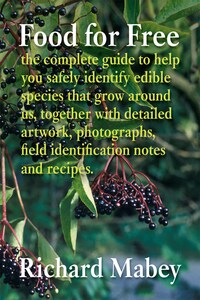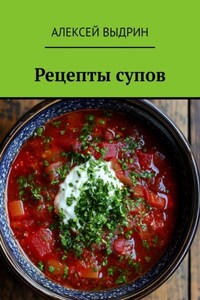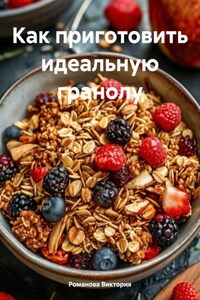Preface to the new edition
In 2010, René Redzepi’s Copenhagen restaurant Noma, whose reputation rests on its innovative use of an extraordinary range of wild ingredients, was judged to be the best eatery in the world in an annual poll of food professionals. It was a milestone in the foraging renaissance, but also a sign of the times. It would be hard to find a serious restaurant these days that doesn’t feature wild food on its menu. Marsh samphire, chanterelles, wild garlic, dandelion leaves, elderberries, have all become routine ingredients. And increasingly wildings are marshalled into the exotic presentations of the new cuisine. Snails on moss. Haws conjured into ketchup. Cep cappuccino. Sea-buckthorn-berry gel. A whole infrastructure of professional pickers has evolved to service the fashion, and portfolios of television series to popularize it. Wild food has gone mainstream.
How times have changed. When the first edition of Food for Free was published in 1972, foraging was still regarded as mildly eccentric. To the extent that it was a new (or revived) tradition, it seemed part of the counter-culture, not the food business. It was a natural outgrowth of the idealism of the 60s, and its roots were firmly anchored in the burgeoning interests in ecology and food quality. I have a snapshot of myself taken around the time the book was published. I’m sitting cross-legged on the lawn in a kaftan, looking rather smug, and cradling an immense puffball on my lap. What the picture reminds me of, forty years on, is that foraging for wild food then didn’t feel much like an exploration of some ancient rural heritage (though of course it was). It felt political, cheeky, hedge-wise, a poke in the eye for domesticity as much as domestication. It was only later that I began to appreciate that it might also be a way – on all kinds of social and cultural and psychological levels – of ‘reconnecting with the wild’.
But if you were to look at it sceptically, the growing popularity of wild food could seem like a shift in the opposite direction, not so much connecting ourselves with the wild, as domesticating the feral. The seriously intellectual Oxford Food Symposium devoted its annual conference to wild food in 2004. There were learned papers on foraging customs in south-west France and on ‘Wild food in the Talmud’, and a tasting of ‘The feral oils of Australia’. Here in the UK local authorities lay on guided forays in their country parks. New Forest fungi are on sale in supermarkets. The seeds of wild vegetables such as alexanders are available commercially, so you can germinate the wilderness in a window box. The fashionable rise of wild foods is perfectly expressed by the changing fortunes of marsh samphire. In the 60s it was an arcane seashore delicacy, a ‘poor man’s asparagus’. In 1981 it was served at Charles and Diana’s wedding breakfast, gathered fresh from the Crown’s own marshes at Sandringham. In the new millennium it’s become a garnish for restaurant fish, and a favourite seaside holiday souvenir, sold by the bag to those who don’t want to get their own legs mud-plastered, and as a bar-top snack, lightly vinegar-ed and set in bowls next to the crisps and peanuts. Out in the market-place the spirit of the hunter-gatherer seems to be waning.

© Paul Hobson/FLPA
© ImageBroker/Imagebroker/FLPA
But out in the countryside it is alive and well, and this strange duality – of atavistic foraging coexisting with comfortable eating-out – forces the question why? Why should 21st century diners, with most of the taste sensations on the planet effortlessly available to them on a plate, occasionally choose to browse about like Palaeolithics? What are we after? We’re opting for the most part for inconvenience food, for bramble-scrabbling, mud-larking, tree-climbing. For the painful business of peeling horse-radish and de-husking chestnuts., and the dutiful munching – for historic interest, of course – of the frankly rank ground elder, just because it was bought here as a pot-herb two thousand years ago. It seems a far cry from the duty once spelt out by that Edward Hyams, doyen of plant domestication, ‘to leave the fruits of the earth finer than he found them’.
But the inconvenience, the raw uncensored tastes, the necessity of getting physical with the landscape, may be the whole point. The gratifying discomfort of hunting down food the hard way seems genuinely to infuse its savour – even when someone else has done the gathering. As Henry David Thoreau wrote in Wild Fruit (1859): ‘The bitter-sweet of a white-oak acorn which you nibble in a bleak November walk over the tawny earth is more to me than a slice of imported pine-apple’. Another American forager called this elusive quality ‘gatheredness’.
To judge from the hundreds of letters I’ve been sent over the years, readers understand this. The intimacy with nature that foraging involves isn’t seen as pretend primitivism or some misty-eyed nostalgia for the simple life. Rather, it has encouraged a growing awareness of how food fits into the whole living scheme of things, and a curiosity and inventiveness that are every bit as sharp as those of our ancestors. Readers were writing about wild raspberry vinegar long before it became a fashionable ingredient of nouvelle cuisine; about the secret sites and local names of the little wild damsons that grow on the Essex borders; about childhood feasts of seaweed ‘boiled in burn water and laid on dog roses to dry’. Foreign cuisines, in which wild plants have always been important ingredients, have been brought to bear on our native wildings, and there have been experiments with fruit liqueurs that go way beyond sloe gin: service berries in malt whiskey, cloudberries in aquavit, gin with extra juniper berries.








